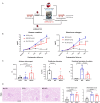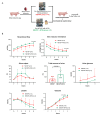Normothermic ex vivo kidney perfusion preserves mitochondrial and graft function after warm ischemia and is further enhanced by AP39
- PMID: 39278958
- PMCID: PMC11402965
- DOI: 10.1038/s41467-024-52140-9
Normothermic ex vivo kidney perfusion preserves mitochondrial and graft function after warm ischemia and is further enhanced by AP39
Abstract
We previously reported that normothermic ex vivo kidney perfusion (NEVKP) is superior in terms of organ protection compared to static cold storage (SCS), which is still the standard method of organ preservation, but the mechanisms are incompletely understood. We used a large animal kidney autotransplant model to evaluate mitochondrial function during organ preservation and after kidney transplantation, utilizing live cells extracted from fresh kidney tissue. Male porcine kidneys stored under normothermic perfusion showed preserved mitochondrial function and higher ATP levels compared to kidneys stored at 4 °C (SCS). Mitochondrial respiration and ATP levels were further enhanced when AP39, a mitochondria-targeted hydrogen sulfide donor, was administered during warm perfusion. Correspondingly, the combination of NEVKP and AP39 was associated with decreased oxidative stress and inflammation, and with improved graft function after transplantation. In conclusion, our findings suggest that the organ-protective effects of normothermic perfusion are mediated by maintenance of mitochondrial function and enhanced by AP39 administration. Activation of mitochondrial function through the combination of AP39 and normothermic perfusion could represent a new therapeutic strategy for long-term renal preservation.
© 2024. The Author(s).
Conflict of interest statement
The authors declare no competing interests.
Figures







References
Publication types
MeSH terms
Substances
LinkOut - more resources
Full Text Sources
Medical

